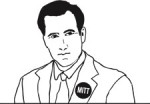New Search
If you are not happy with the results below please do another search
797 search results for: MG Turner
#FridayReads, August 31–“Wilderness” by Lance Weller + Matt Taibbi
/0 Comments/in Books & Writing, Publishing & Bookselling #FridayReads, August 31–“Wilderness” by Lance Weller. This is a novel occurring post-Civil War, though set not in the south like Charles Frazier’s Cold Mountain or The Sands of Pride by my own author William R. Trotter. Instead, this is set in 1899, more than thirty years after the end of the war, with a protagonist, Abel Truman, who is scratching out an existence for himself in the Pacific Northwest, on the edge of the western-facing ocean. Coming from Bloomsbury in September, I am reading and really enjoying an advance reading copy (ARC) I got at Book Expo America (BEA), back at the beginning of the summer.
#FridayReads, August 31–“Wilderness” by Lance Weller. This is a novel occurring post-Civil War, though set not in the south like Charles Frazier’s Cold Mountain or The Sands of Pride by my own author William R. Trotter. Instead, this is set in 1899, more than thirty years after the end of the war, with a protagonist, Abel Truman, who is scratching out an existence for himself in the Pacific Northwest, on the edge of the western-facing ocean. Coming from Bloomsbury in September, I am reading and really enjoying an advance reading copy (ARC) I got at Book Expo America (BEA), back at the beginning of the summer.
Also reading Matt Taibbi’s investigative article in Rolling Stone, “Greed and Debt: The True Story of Mitt Romney and Bain Capital,” full of revelations on how Mitt Romney manipulated Federal regulators in to allowing Bain & Company (as distinct from Bain Capital) to reclaim money that ought to have been returned to the Treasury.
Judith Butler, Under Attack, Responds to her Critics
/1 Comment/in Personal History, Family, Friends, Education, Travels I grew up in the suburbs of Cleveland, Ohio, where our family’s dentist was Dr. Danny Butler, a gentle man whom I never minded having take care of my teeth. He was a pleasant-looking fellow, who in retrospect I remember looking a little bit like Jack Paar. When I moved to New York in 1985, Diane Butler, one of Danny’s daughters, was living in the city, studying dance. I met up with her in Gotham, and traded old Cleveland stories. Remembering that my family had run Undercover Books, Diane told me her about her smart sister who was starting to make waves in academia, and as an author. Her sister was Judith Butler–who went on to become well known as a philosopher, UC Berkeley professor, and author.
I grew up in the suburbs of Cleveland, Ohio, where our family’s dentist was Dr. Danny Butler, a gentle man whom I never minded having take care of my teeth. He was a pleasant-looking fellow, who in retrospect I remember looking a little bit like Jack Paar. When I moved to New York in 1985, Diane Butler, one of Danny’s daughters, was living in the city, studying dance. I met up with her in Gotham, and traded old Cleveland stories. Remembering that my family had run Undercover Books, Diane told me her about her smart sister who was starting to make waves in academia, and as an author. Her sister was Judith Butler–who went on to become well known as a philosopher, UC Berkeley professor, and author.
Soon after I got settled in New York I began working in publishing, and began hearing about Judith’s written work in the fields of women’s studies, gender, philosophy, and related topics. One of her latest books is Parting Ways: A Jewish Critique of Zionism (Columbia University Press, 2012), in which she grapples with the ideas of earlier thinkers such as Emmanuel Levinas, Walter Benjamin, Hannah Arendt, Primo Levi, Edward Said, and Mahmoud Darwish, to arrive at her own critique of Zionism. She is a serious thinker, and not a hater.
I was intrigued this week to see that she’d written a personal essay for the website Mondoweiss, in which she responds to critics who object to her stated beliefs and opinions about the Middle East conflict. Right-wing elements in the Jewish community have objected to her for some time, but it seems the objections have become more vocal recently with the news that she would be the recipient of the Theodore Adorno Prize, awarded every three years by the city of Frankfurt, Germany.
I was struck by Judith’s cogent and temperate response to what I take to be inaccurate attacks by her critics. Below is the first paragraph of her rebuttal. If you find it reasonable and well-reasoned, I urge you to read her entire statement.
The Jerusalem Post recently published an article reporting that some organizations are opposed to my receiving the Adorno Prize, an award given every three years to someone who works in the tradition of critical theory broadly construed. The accusations against me are that I support Hamas and Hezbollah (which is not true) that I support BDS (partially true), and that I am anti-Semitic (patently false). Perhaps I should not be as surprised as I am that those who oppose my receiving the Adorno Prize would seek recourse to such scurrilous and unfounded charges to make their point. I am a scholar who gained an introduction to philosophy through Jewish thought, and I understand myself as defending and continuing a Jewish ethical tradition that includes figures such as Martin Buber and Hannah Arendt. I received a Jewish education in Cleveland, Ohio at The Temple under the tutelage of Rabbi Daniel Silver where I developed strong ethical views on the basis of Jewish philosophical thought. I learned, and came to accept, that we are called upon by others, and by ourselves, to respond to suffering and to call for its alleviation. But to do this, we have to hear the call, find the resources by which to respond, and sometimes suffer the consequences for speaking out as we do. I was taught at every step in my Jewish education that it is not acceptable to stay silent in the face of injustice. Such an injunction is a difficult one, since it does not tell us exactly when and how to speak, or how to speak in a way that does not produce a new injustice, or how to speak in a way that will be heard and registered in the right way. My actual position is not heard by these detractors, and perhaps that should not surprise me, since their tactic is to destroy the conditions of audibility.
For my own part, I believe in co-existence and a two-state solution. In 2008, I lamented the return of Netanyahu to power in Israel, as I feared that his settlements policy would marginalize reasonable voices on all sides, and make a peaceful solution an ever-diminishing prospect. I condemn intolerance, hateful rhetoric, and violence. I do not endorse all of Judith Butler’s positions, but I emphatically support her right of self-expression and applaud the decision of Frankfurt to award her the Adorno Prize.
Sally Kohn, FOX News Contributor, Dismantles Paul Ryan’s Lies/w/ NYT Update
/0 Comments/in Media, Blogging, InternetSaturday Update: I shared Sally Kohn’s FOXNews.com scathing demolition of Paul Ryan on Thursday, and am glad to see that her column is continuing to be widely read and shared. Late Thursday, on Facebook Sally wrote that her piece had by then already had 46,000 shares/reads. Today, Charles M. Blow of the NY Times mentioned it up high in his column recapping the RNC. Blow quotes my fave sentence from her piece, the one I also excerpted below:
Sally Kohn, a contributor to Fox News, said:
“Ryan’s speech was an apparent attempt to set the world record for the greatest number of blatant lies and misrepresentations slipped into a single political speech. On this measure, while it was Romney who ran the Olympics, Ryan earned the gold.”
—
Evening Update: Along with the critiques of Ryan’s speech that I cited below, Daily Kos has come up with an even more list, readable here. H/t friend and colleague Phil Gaskill.
—

A number of excellent critiques of Paul Ryan’s acceptance speech have appeared since he gave it last night, such as this one by Jonathan Cohn on the New Republic website and Jonathan Bernstein’s takedown at the Plum Line, and Adele Stan’s at AlterNet.
My fave so far is this excellent column by FOX News contributor and Facebook friend Sally Kohn, itemizing all the lies and self-serving statements in Ryan’s speech. With Sally publishing the piece at FoxNews.com, it’s great to imagine many FOX readers being shocked at their conservative hero being knocked down several pegs. Among Sally’s best lines is this one:
“Ryan’s speech was an apparent attempt to set the world record for the greatest number of blatant lies and misrepresentations slipped into a single political speech. On this measure, while it was Romney who ran the Olympics, Ryan earned the gold.”
I recommend you read the whole column and share it among your contacts. It’s an excellent rebuttal to the lying Romney/Ryan ticket.
Mitt & his Minions, Sticking it to Coal Miners/w Romenesko update
/3 Comments/in Media, Blogging, InternetSecond Update, two days later: At Jim Romenesko’s media site, it’s reported that Murray Energy is suing a reporter in Charleston, WV, Ken Ward, Jr. for supposedly defaming CEO Bob Murray. Murray is the boss in the two posts below, responsible for docking the pay of workers and who were pushed to attend a pro-Romney rally on Aug. 14. Ken Ward, Jr. had written:
“renegade coal operator Bob Murray played a major role recently in a campaign fundraiser in Wheeling, W.Va., for Republican presidential candidate Mitt Romney” and that “the question for Governor Romney, of course, is whether he thinks criminal behavior by coal companies, especially when it kills workers and damages the environment, is acceptable. If not, why is he buddies with Bob Murray?”
H/t Jim Romenesko
—
I posted the story below at about 2PM this afternoon, and see this evening that ThinkProgress has already pushed the story beyond what I knew earlier. Bob Murray, the CEO of Murray Energy, the coal company that in some fashion compelled their employees to attend an Aug. 14 rally for Mitt Romney, and then docked workers’ pay for the day, is a prolific denialist of climate change, someone who claims that scientists are trying to make money off climate change. That’s rich–a guy who’s made his own fortune digging and shipping coal is accusing other folks of trying to cash in on cleaning up his mess.
—
 You may have recently seen this photo, taken near a coal mine in Beallsville, Ohio, with a story on Mitt Romney bashing President Obama’s energy policy. Turns out, according to a segment broadcast by West Virginia radio show host David Blomquist and a report by Sabrina Eaton in the Cleveland Plain Dealer, those miners were docked a day’s pay when the mine closed for the day so their employer, Murray Energy, could hand over their facility to the Republican candidate for the day. What’s more, the miners may have been compelled by their employer to attend the pro-Romney event–Blomquist heard from miners who told him this, while the company denied it with a perfectly Orwellian statement: “Chief Financial Officer Rob Moore . . .told Blomquist that managers ‘communicated to our workforce that the attendance at the Romney event was mandatory, but no one was forced to attend.’ He said the company did not penalize no-shows.”
You may have recently seen this photo, taken near a coal mine in Beallsville, Ohio, with a story on Mitt Romney bashing President Obama’s energy policy. Turns out, according to a segment broadcast by West Virginia radio show host David Blomquist and a report by Sabrina Eaton in the Cleveland Plain Dealer, those miners were docked a day’s pay when the mine closed for the day so their employer, Murray Energy, could hand over their facility to the Republican candidate for the day. What’s more, the miners may have been compelled by their employer to attend the pro-Romney event–Blomquist heard from miners who told him this, while the company denied it with a perfectly Orwellian statement: “Chief Financial Officer Rob Moore . . .told Blomquist that managers ‘communicated to our workforce that the attendance at the Romney event was mandatory, but no one was forced to attend.’ He said the company did not penalize no-shows.”
Got that? “Attendance. . . was mandatory, but no one was forced to attend.” Aren’t people embarrassed to say stuff like this? According to Blomquist’s interview with Moore, which you can hear via this link to the show on radio station WWVA, the executive seems to want people to believe that after the event the company decided they wouldn’t enforce the rule, and would let any no-shows off the hook. Mitt and his minions commit crimes against language as handily as they exploit workers.
Eaton’s Plain Dealer article ends with this telling piece of information:
“Records compiled by the Center for Responsive Politics show that Murray Energy has contributed more than $900,000 to Republican candidates in the last two years.”
Please share this story widely as possible among your social networks–it’s emblematic of the whole campaign and why the fate of the middle class is at stake in this year’s election.
Tosca, a San Francisco Retreat, Facing Eviction
/1 Comment/in Food & Spirits, Personal History, Family, Friends, Education, Travels, Publishing & Bookselling, Urban Life & New York City When I worked for Carroll & Graf Publishers from 2000-2007 I used to travel 2-3 times a year to the Bay Area for sales conference with our parent company Avalon Publishing Group. Though Avalon was based in Berkeley, I learned from my senior colleague Herman Graf that it was far more interesting to stay in San Francisco, and drive over the Bay Bridge to the East Bay in the morning for our meetings. Years earlier Herman–who I recently helped fete to mark his 51 years in publishing–had years before I joined the company staked out a motel that suited his needs perfectly, and mine too once I became semi-frequent on the Jet Blue flights from JFK to SFO.
When I worked for Carroll & Graf Publishers from 2000-2007 I used to travel 2-3 times a year to the Bay Area for sales conference with our parent company Avalon Publishing Group. Though Avalon was based in Berkeley, I learned from my senior colleague Herman Graf that it was far more interesting to stay in San Francisco, and drive over the Bay Bridge to the East Bay in the morning for our meetings. Years earlier Herman–who I recently helped fete to mark his 51 years in publishing–had years before I joined the company staked out a motel that suited his needs perfectly, and mine too once I became semi-frequent on the Jet Blue flights from JFK to SFO.
This establishment was the Royal Pacific Motor Inn, and I see from the Web that it’s still thriving. The Royal Pacific had everything we wanted–perfectly adequate and clean motel rooms; free guest parking, which Herman appreciated since he was the one of us who rented a car (never mind that driving with him was often a hilarious if not nerve-wracking adventure); and great restaurants and nightlife all around us in the Chinatown/North Beach neighborhood. The motels current reviews on yelp.com make clear that, depending on your personal preferences, it can be an ideal and reasonably priced place to stay when you’re in the Bay Area.
The nearby streets offered innumerable Italian and Chinese restaurants (I still recall and savor the fresh whole Dungeness crab cooked Szechuan-style I ate one night at a Chinese place less than a 100 steps from the motel); coffee bars; City Lights Bookstore and Black Oak Books; and Tosca Cafe, an after-hours bar and hang-out that was a pleasant cave-like retreat from the busy sidewalks outside. Its soft lighting showed red booths, eye-catching murals on dark walls, and a long bar to stand at or park a stool in front of. Back in the day, Enrico Caruso frequented Tosca, so the excellent jukebox sported not only rock n’ roll, but opera. Whatever the musical genre, it was never up too loud. There was also a back room with a pool table, where I once shot a game or two with astronomer and author Timothy Ferris. Over the years Tosca’s clientele has been reported to include Sam Shepard, Gov. Jerry Brown, and Francis Ford Coppola, who with Tosca’s owner Jeannette Etheredge, started an initiative for homeless denizens of North Beach, according to C.W. Nevius of the San Francisco Chronicle. Like such legendary watering holes as Greenwich Village’s White Horse Tavern, remembered fondly in Pete Hamill’s memoir, A Drinking Life, and Elaine’s Restaurant on Manhattan’s Upper East Side, Tosca always seemed like a place that didn’t try to do too much for its customers, but what it did do, it did very well.
These recollections of the Royal Pacific, North Beach, and Tosca are prompted by a column by reporter Nevius in last Saturday’s Chronicle. He reports that Toscas’s landlord, a strip club owner named Roger Forbes, is seeking a substantial rent increase that Etheredge says she she simply cannot afford to pay. If the two are unable to reach a settlement, Tosca may be evicted. Etheredge laments the situation, telling Nevius, “Look at the place. It’s out of an Edward Hopper painting.” Like the late Elaine Kaufman of Elaine’s, who was known to sometimes treat customers with disdain, Etheredge is also no shrinking violet. Nevius writes,
Etheredge has a long history in North Beach. Her family owned Bali’s, a restaurant there, and she purchased Tosca in April 1980. However, it is probably too much to expect that she would polish a few of her rough edges. One of her endearing traits is that she treats famous actors just like everyone else–she yells at them, too.”Everybody knows she’s a pain in the ass,” said [her attorney] Keker. “And everyone loves her.”
Well, maybe not Roger Forbes. For his part, Nevius adds,
That’s why, although Forbes may have all that strip club cash, I don’t like his chances. It is possible that he could evict Tosca and put in another generic stripper revue in its place. He might even make a little more money. People are reportedly warning Forbes not to mess with Tosca. Putting in a strip club is one thing. Evicting an institution is another. You’ll still get a nice sum in rent and you won’t incur the wrath of the city’s famously combative true believers. That’s good advice.
Urban homogenization is increasing everywhere these days, whether banks and chain drugstores taking over the commercial blocks on the upper west side of Manhattan, or North Beach submitting to the siren song of tourist-friendly peep shows. As a New Yorker who’s seen favorite businesses lose their lease or disappear overnight (farewell Calcutta Cafe on Broadway at 104th St.), I hope Tosca can hang on. After reading about Tosca’s troubles, I called Herman Graf to let him know and share some old North Beach memories. He reminded me that during sales conference week, other Avalon Publishing Group clients, such as Morgan Entrekin of Grove Atlantic, would end up at Tosca in the wee hours, one of the very best times to hang out there. To get a sense of the bar’s splendid interior and rich history, I urge you to view the rest of photographer Carlos Avila Gonzalez’s excellent slideshow and read Nevius’s entire column via this link.
300th Blog Post
/0 Comments/in Personal History, Family, Friends, Education, Travels, Philip Turner's Books & WritingWhen I look at the dashboard for this website I feel as I’ve lifted the hood of a car and am peering in at all the belts and fans and cables. The difference is that just two months shy of a year since I started The Great Gray Bridge, I pretty much know what’s going on under its hood, whereas with an automobile I never will. One thing the dashboard shows at a glance is how many posts I’ve published, counting from the very first one I put up October 30th last year. As you can see from the screenshot pasted in below, a handy counter shows that the next post I put up–this post, in fact–will be my 300th since the blog’s inception. 
While I concede that the recognition of benchmarks like this one is only as important as we make them, I want to pause a few moments over this milestone. In ten months as a (near) daily blogger, what have I learned?
1) I now know for sure that by last fall–nearly three years after I had stopped working as an editorial director for a major publishing house–I missed having a list of new books to acquire, edit, package, and assemble for each new publishing season. I wanted something to curate, a garden of words and enthusiasms to plant, tend, and share. This blog has allowed my curatorial instinct to bloom again.
2) I know for sure that I am fortunate to have a loyal cadre of readers who, over the past several months on average, number between 850-1100 unique visitors to the site every day. I also know that my readers–you–average three pages viewed on the site during each visit. I am very grateful for this attention to what I write and post and pledge to keep writing and posting with the frequency and variety that I have done for the past ten months, hopeful that the time spent here you regard as well-rewarded.
3) I see from the second screenshot shown here that the categories forming the super-structure of the site, with each new post being assigned one or more categories under such rubrics as Art, Film, Photography, Design; Books & Writing; Canada; Media; Music, Bands & Radio; Publishing & Bookselling; and Urban Life, New York City & Bicycling, to name only a handful of the fifteen total–form a telling cross-section of my interests and what I’m covering. The bookish buckets, Books & Writing and Publishing & Bookselling, combine to comprise two of the most heavily populated categories, with 138 and 55 posts respectively, while News, Politics & History clocks in at 101 (sure to keep growing as the fall political campaign heats up). Meantime, my musical mission is highlighted by the 68 posts falling under Music, Bands & Radio, with many of those overlapping with the 50 I’ve assigned under the category, “Canada,” whose indie music scene I follow closely, as fan and blogger.
I follow closely, as fan and blogger.
I’ve recently added a couple new categories–Sports and Food & Spirits, and tacked Bicycling on to the Urban Life, NYC category, as I had earlier omitted it. Considering that I bike approximately 40 miles per week in the city, during which I get some of my best blogging ideas and have adventures I later write about, I’m going to be blogging about biking from time to time, especially as biking becomes a civic and political issue in Gotham, with the BikeShare program due to start in 2013.
Another recent addition is the page at the top of the site called PT–Personal, a biographical sketch that is a counterpart to PT–Professional. In the former I chronicle my personal history from teenage years in Cleveland to the point at which I became a bookseller and editor, covered in the latter page. I will also soon be creating a page called PT–Photographs, where I’ll be posting pictures relevant to my personal history and pursuits.
Whether this is your first time on my site, or if you’re a frequent visitor, thanks for dropping by and spending time here. Please feel free to comment and share, or just to poke around and read. You needn’t leave any footprint at all, as I know that many readers prefer not to.
I want to close this 300th post by saying that in the build-up to what will be the one-year anniversary of the site in October, I will also be marking the 80th anniversary of the opening of the George Washington Bridge, aka The Great Gray Bridge, which I’ve previewed in this post. I invite you to check back again soon.
Herman Graf in 2012, Celebrating 51 Years in the Book Biz (now with a Bob Wietrak 2018 update)
/12 Comments/in Books & Writing, Philip Turner Book Productions, Publishing & BooksellingFebruary 6 2018 Update: With the sad passing this week of Bob Wietrak, longtime bookseller and publishing executive—with whom I was a colleague at Macmillan from 1987-1990—I want to point out to friends and readers of this blog that Bob was involved in a harrowing episode at one of our annual book conventions, at an ABA in the 1980s, the one time the trade show was held in Las Vegas. A key figure in the incident was Herman Graf, the longtime publishing pal whose surprise birthday party I wrote about below in 2012. Bob was at that party, too, seen in the background of the photo below.
In a phone call tonight Herman reminded me of some of Bob’s best qualities. Herman told me, “He had an uncanny talent for predicting what books would work big. He also had a knack for making publishers feel generally satisfied about the ordering and marketing decisions that the national book chain made about what books to feature, while also keeping B&N’s upper management satisfied.” Bob was laid off in a big B&N purge in 2011, when 40 people were let go, and went on to later jobs with online book sites Bookish and Zola. (I know about B&N’s corporate purges first-hand as in 2009 I was let go in a twenty-person layoff from Sterling Publishing, B&N’s publishing division, where I worked as Editorial Director, V-P of Union Square Press.) Nearly seven years after the party for Herman, I’m really glad that Bob Wietrak was there that night.
——
 Last night Kyle and I were delighted to join a group of several dozen well-wishers who sprung a surprise party in honor of Herman Graf and his 51 years in publishing. Herman walked in on the hushed throng which had assembled in the living room of Tony Lyons, founder of Skyhorse Publishing, expecting to join Tony for dinner, when in unison we let out with our “Surprise.” More than a bit stunned, Herman said, “It’s not my birthday.” It’s not even my Bar Mitzvah.” We took the photos accompanying this post in the first few minutes after he walked in to find a party had been laid for him.
Last night Kyle and I were delighted to join a group of several dozen well-wishers who sprung a surprise party in honor of Herman Graf and his 51 years in publishing. Herman walked in on the hushed throng which had assembled in the living room of Tony Lyons, founder of Skyhorse Publishing, expecting to join Tony for dinner, when in unison we let out with our “Surprise.” More than a bit stunned, Herman said, “It’s not my birthday.” It’s not even my Bar Mitzvah.” We took the photos accompanying this post in the first few minutes after he walked in to find a party had been laid for him.
Herman began his publishing career in 1961, doing stints with McGraw-Hill, Doubleday, Arco Books, and then Grove Press, where he worked in sales and marketing during the indie press’s 60s and 70s heyday. This was the time when Grove was bringing writers like Samuel Beckett, Eugene Ionesco, Jean Genet, and Mikhail Bulgakov to American readers, even while founder Barney Rosset was frequently in court, accused of distributing “obscene” literature, like D. H. Lawrence’s Lady Chatterly’s Lover. Herman rode that tiger with Barney, and other key Grove executives, such as Kent Carroll, Fred Jordan and Richard Seaver. That era is covered well in the 2007 documentary “Obscene,” made by Dan O’Connor and Neil Ortenberg, also old colleagues of Herman’s, and mine.
The ride was so rollicking that in later years Herman liked to say, “I was the Billy Martin of publishing; Barney fired me three times, and rehired me twice.” There was something to this George Steinbrenner-Billy Martin analogy, as Herman, like the brawling, ill-fated Yankee manager, could handle himself in a tight spot, having been a fair boxer when he grew up in the Bronx. Once, at a Las Vegas ABA in the early 80s—the annual convention of the book industry—Herman found himself defending a number of bookseller friends including the genial Barnes & Noble executive Bob Wietrak. Bob and other B&N people found themselves on the wrong side of some ornery Vegas bouncers intent on vacating an after-hours club at an early hour, even though B&N management had secured the room for the night to host a publishing party. These bouncers were attacking the B&N people, slamming them and pushing them. Herman stepped between Bob and the bouncers, and over the next few minutes bulled, brazened, and punched his way out of the club with Bob and others in tow. I know this story is true—I heard about it not only from Herman, but from my late brother Joel, a bookseller—who happened to also be at the venue that night.
In 1978, my sibling and I with our parents began operating our Cleveland indie bookstore chain, Undercover Books, and like many stores of the time, we were glad to have an obscure bestseller land in our laps, A Confederacy of Dunces, the posthumous novel of John Kennedy Toole. The book came with a star-crossed and tragic pedigree–the author had killed himself after failing to get it published, whereupon his grieving mother managed to get it into the hands of Walker Percy. The great southern novelist championed it and convinced editors at the University of Louisiana Press to publish it in hardcover. However, that wasn’t the end of the story. Meantime, Grove Press had acquired rights to publish a paperback edition, but the university press edition, though attracting much critical attention and press, had not really sold a lot of copies in hardcover. Herman, though working for Grove, took it upon himself to sell many thousands of copies of the LSU press edition to national wholesalers, such as Ingram where Cathy Hemming ordered copies. The market was seeded for the paperback edition. When Grove published it some months later it sold hundreds of thousands of copies, and millions since, in part owing to Herman’s work for the hardcover of another publishing house.
Herman told me that story sometime after 2000, the year he hired me to work with him at Carroll & Graf, the company he started in the mid-70s. Last night it was great seeing old C&G colleagues, Peter Skutches, Failey Patrick, Tina Pohlman, Bea Goldberg, and Claiborne Hancock. One of our authors, Stan Cohen was there, and his agent, Peter Sawyer. Agent, Laura Langlie, a friend to C&Gers, was also there. Norton execs Bill Rusin and Dozier Hammond also gave their best wishes in person, as did Bob Wietrak.
The seven years I spent with C&G were among the most productive, fun, and successful years of my publishing career. I learned so much working with Herman and got to hear some of the best–and often the funniest–stories about the business. Together we acquired many terrific books and published them creatively and energetically, including Susan MacDougal’s The Woman Who Wouldn’t Talk: Why I Wouldn’t Testify against the Clintons and What I Learned in Jail and Ambassador Joseph Wilson’s The Politics of Truth: Inside the Lies that Led to War and Betrayed My Wife’s CIA Identity, both of which became NY Times bestsellers. The years there finally confirmed me on an editorial path I had begun to hew to by 2000, but had not yet fully embarked on–of publishing truthellers, whistleblowers, muckrakers, authors of such singular witness that only they could write the book in question.
Herman now works with Skyhorse Publishing, for whom a book he acquired, The General: Charles de Gaulle and the France He Saved by Jonathan Fenby, got a great review in last Sunday’s New York Times Book Review. He is not stepping back or slowing down.
Thanks to Tony Lyons and Jennifer McCartney of Skyhorse Publishing, and Claiborne Hancock, who after leaving Carroll&Graf started his own company, Pegasus Books. They did a great job of hosting and organizing the surprise party for our friend and colleague, Herman Graf.

